Volere AA

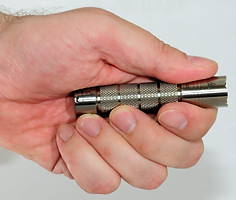
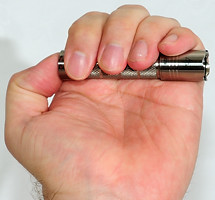
This light is from Steve Ku that started by selling LiteFlux LF2XT and doing modifications to them, he also made some titanium bodies for them. Then he made titanium bodies for some other lights and now he has made his own light and is selling it. The Volere is a titanium (naturally) AA light with 3 brightness settings, selected by clicking on the tail switch, this clicking is a bit sensitive to click speed, fast clicks are ignored.
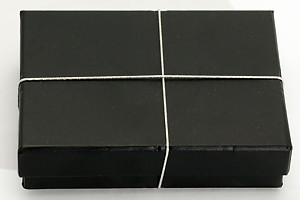
The light arrives in a black cardboard box without any markings. This is a nice packing for a custom light.
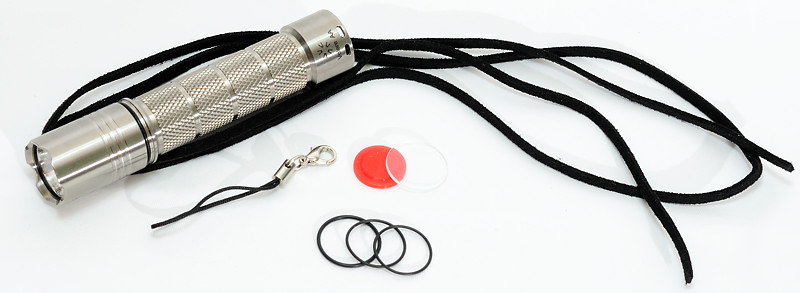
The box contains the light, a thong, a small lobster claw, a extra front glass, 3 O-rings and a silicone pad. No manual, holster or clips (But it will be possibly to buy a clips for the light).
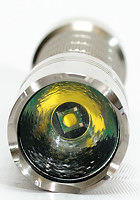
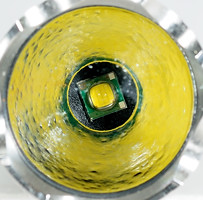
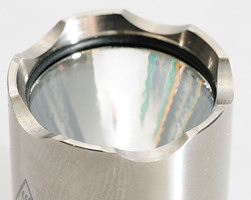
Looking from the front the OP (Orange peel) reflector can be seen, together with the Cree XP-G led. The bezel has cutouts, i.e. it is possible to see the light is on if it is placed head down.
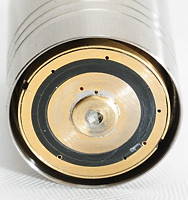
On the backside of the head the drive can be seen. This has a plate soldered on where the battery touches, this improves the resistance to wear. The space between the titanium and the driver, is where the body is screwed in.
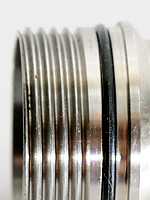
Looking at the treads on the body, they look very good. They are large and with good machining making them very smooth. The O-ring keeps this joint waterproof.
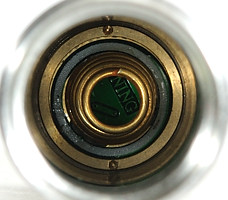
Looking into the battery tube, a spring can be seen.
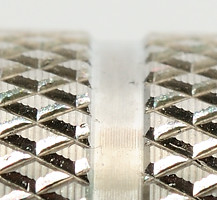
The body has knurling with a good bite to it.
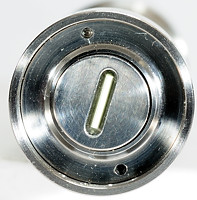
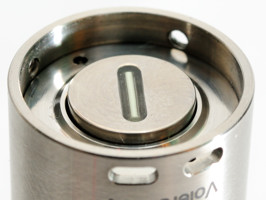
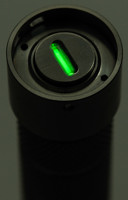
The tail has the switch, holes to mount a clip and a lanyard and a optional tritium capsule.
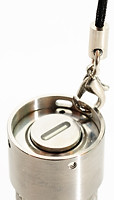
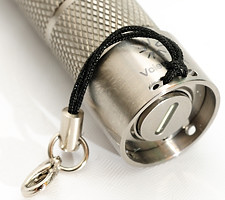
Here I have mounted the lobster claw, it can be mounted either way. I believe that it is to tiny for this light, I would not like to lose the light (I have not tested the strength of it, I am basing this on looks alone).
The switch is special, it is not the typical on/off switch used in flashlights, but a momentary switch. This means that there must be a circuit to turn keep the light on and this circuit must be supplied with power. Other manufactures has done this with a second connection in the battery tube, but here it is solved with a ultra capacitor that will suck some power from the battery when the light is off and use that power to keep the light on. This design has some advantages, like long lifetime and consistent performance, the disadvantages is a small power drain when the light is off and a limit to how long the light can stay on, before the capacitor needs to recharge. I will analyze this more in the next section.
I think the light has very good design and machining, it works well on NiMH and the electronic switch will secure a long lifetime even with hard use. The brightness can go to a very high level, but does miss a low level. I am not really happy about the driver when using a LiIon battery (See note at bottom).
Technical specification and measurements
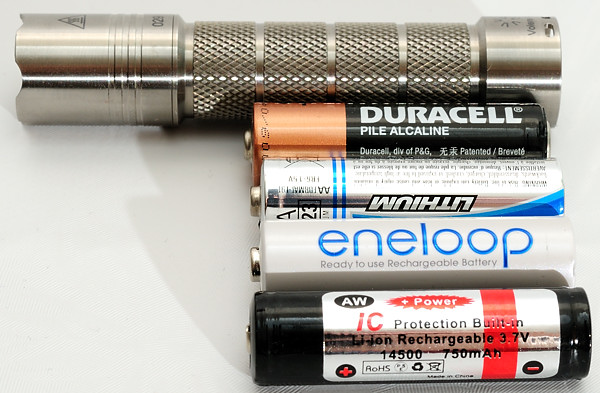
The Volere AA is designed to work on AA batteries and will work with all chemistries, including LiIon.
Measured size and weight:
Length: 90.6 mm
Diameter: 16.1 to 19 mm
Weight: 59 gram with AW 14500 and 64 gram with eneloop
The light uses a Cree XP-G led, either a R5 cool white or R4 neutral white (This review is done with neutral white).
Standby current: below 15uA with LiIon, this is years on a typical LiIon cell. The standby current is used to charge the electronic switch.
Standby current: below 1uA with NiMH, this is more years than any battery will last.
Electronic switch: on-resistance 31mOhm rising to 38mOhm after 12 hours, current was 1.5 ampere. Switch was charged from a LiIon battery.
Electronic switch: on-resistance 64mOhm rising to 70mOhm after 2 hours (81mOhm after 4 hours), current was 1.5 ampere. Switch was charged from a NiMH battery.
The switch charges when the light is off and can takes hours to fully charge, when charged it can hold that charge for days.
These measurements shows that the electronic switch works very well on LiIon and acceptable on NiMH.

The above table shows the specified led current and all the measured parameters.
The estimated runtime is calculated with a 2000mAh NiMH and 750mAh LiIon battery. The LiIon I measure with is about 700mAh according to my charger.


The light is using pwm at 38 kHz to regulate the brightness, here is the low brightness.


Medium brightness.


High brightness, for some reason the brightness when on is lower at the high setting. Because the on time is longer, the visible brightness is higher, just not 9 times brighter as the change from 10% to 90% would suggest.
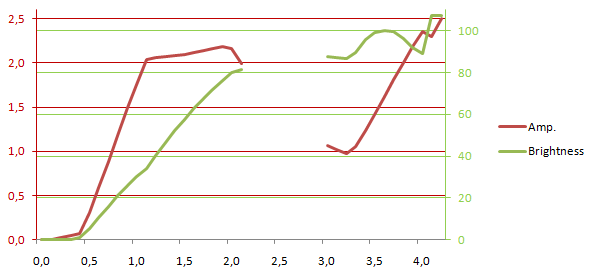
Doing a voltage sweep show that the light turns on at 0.7 volt and has LiIon warning flash between 2.2 and 2.9 volt. The brightness is not stabilized, but designed to get as much as possible from the battery. The brightness jump in the curve at 4 volt is due to heat, from 4 volt and down I measured with the light constant on, the 4.1 and 4.2 volt settings was measured with only a very short on time. The light is using a lot of power with a fresh LiIon battery (8 to 9 watt), without giving any extra brightness for it.
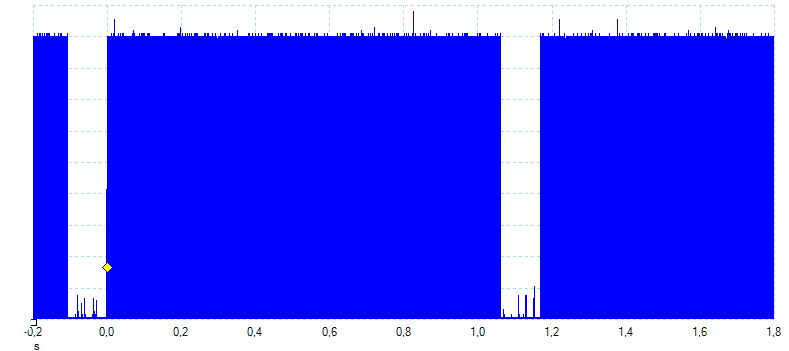
A closer look at the low battery warning, it changes to low brightness and uses a cycle with 1 second on and 0.1 second off.
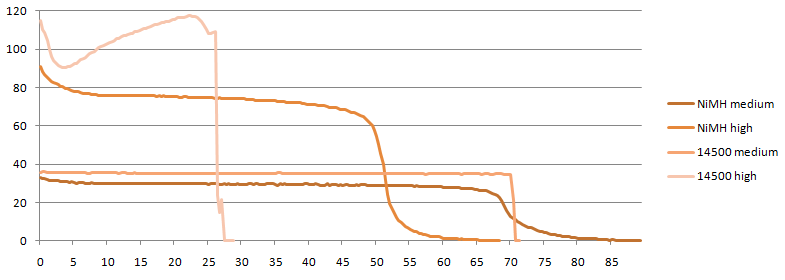
The runtime also shows the behavior from the voltage sweep. The topmost curve is the LiIon on high, probably due to heat it cannot keep maximum output with a fresh LiIon, when the voltage has fallen on the battery, the brightness will go up again. The second curve from the top is the NiMH high and it has highest brightness with a fresh NiMH, due to the slightly higher voltage, then it settles down to a long steady brightness, until the battery is nearly empty.
The medium runtime is much smoother, because there are no heat problems and the battery voltage is more stable with the lower load.
Note: The runtime test was done with a fan cooling the light.
Comparison to other Flashlights
The comparison can be found here.
Notes
Steve Ku is planning on a new driver design for the light and also planning to retrofit already sold lights with it.
The light is sold here.



























